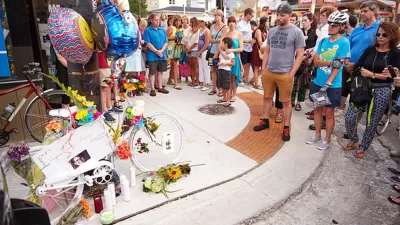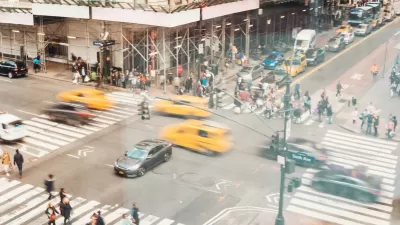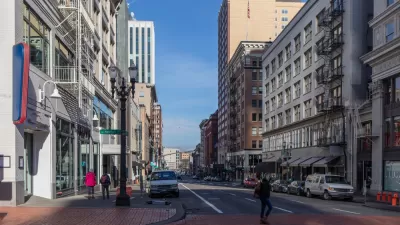To end traffic fatalities while still enabling urban mobility, cars will have to slow down and people will have to travel by other modes.

Antonio Loro writes an opinion piece on the subject of traffic safety and the inevitable backlash against efforts to achieve "Vision Zero" safety improvements.
It seems that some members of the public are more concerned that Vision Zero projects (like reducing vehicles lanes, adding traffic calming elements to the street, and improving bike infrastructure) will kill something more sacred than human life—the ability to quickly move from point a to point b in a car. Loro cites recent controversies over road diets on the Westside of Los Angeles as evidence of the willingness of some communities to sacrifice lives for the sake of mobility.
Loro's argument is just the opposite: that urban mobility must not sacrifice human lives. "To end road deaths, cities will have to tame unruly traffic, though it won’t be necessary to slow everything to a crawl; beyond that, more people will have to shift to modes of transport that, conveniently, are both safer than cars and provide more efficient ways to get around cities."
Loro details the kinds of measure that can slow down traffic, while pointing to the example of airline safety as an example of the kind of safety considerations that can be implemented for travel. Still, despite the many options for reconfiguring the street available to Vision Zero campaigns, people will still have to decide to travel by more efficient modes, like biking, walking, or riding public transit, if they want to improve traffic safety and improve congestion in the city.
FULL STORY: What’s the right number of people to kill on the roads? (Hint: it’s zero)

Alabama: Trump Terminates Settlements for Black Communities Harmed By Raw Sewage
Trump deemed the landmark civil rights agreement “illegal DEI and environmental justice policy.”

Planetizen Federal Action Tracker
A weekly monitor of how Trump’s orders and actions are impacting planners and planning in America.

The 120 Year Old Tiny Home Villages That Sheltered San Francisco’s Earthquake Refugees
More than a century ago, San Francisco mobilized to house thousands of residents displaced by the 1906 earthquake. Could their strategy offer a model for the present?

In Both Crashes and Crime, Public Transportation is Far Safer than Driving
Contrary to popular assumptions, public transportation has far lower crash and crime rates than automobile travel. For safer communities, improve and encourage transit travel.

Report: Zoning Reforms Should Complement Nashville’s Ambitious Transit Plan
Without reform, restrictive zoning codes will limit the impact of the city’s planned transit expansion and could exclude some of the residents who depend on transit the most.

Judge Orders Release of Frozen IRA, IIJA Funding
The decision is a victory for environmental groups who charged that freezing funds for critical infrastructure and disaster response programs caused “real and irreparable harm” to communities.
Urban Design for Planners 1: Software Tools
This six-course series explores essential urban design concepts using open source software and equips planners with the tools they need to participate fully in the urban design process.
Planning for Universal Design
Learn the tools for implementing Universal Design in planning regulations.
Clanton & Associates, Inc.
Jessamine County Fiscal Court
Institute for Housing and Urban Development Studies (IHS)
City of Grandview
Harvard GSD Executive Education
Toledo-Lucas County Plan Commissions
Salt Lake City
NYU Wagner Graduate School of Public Service





























